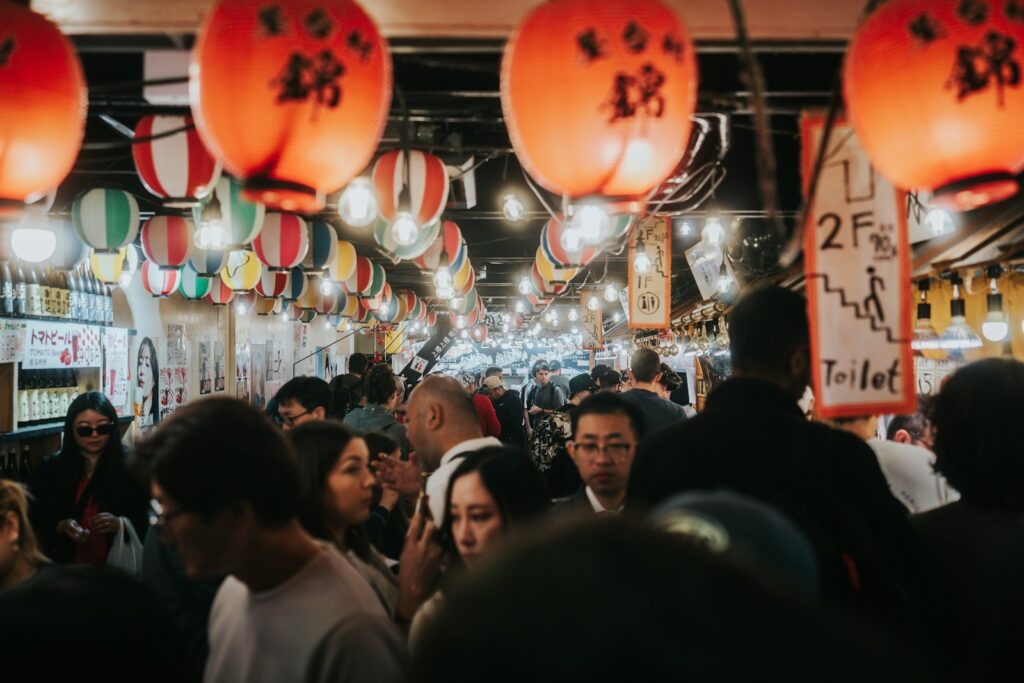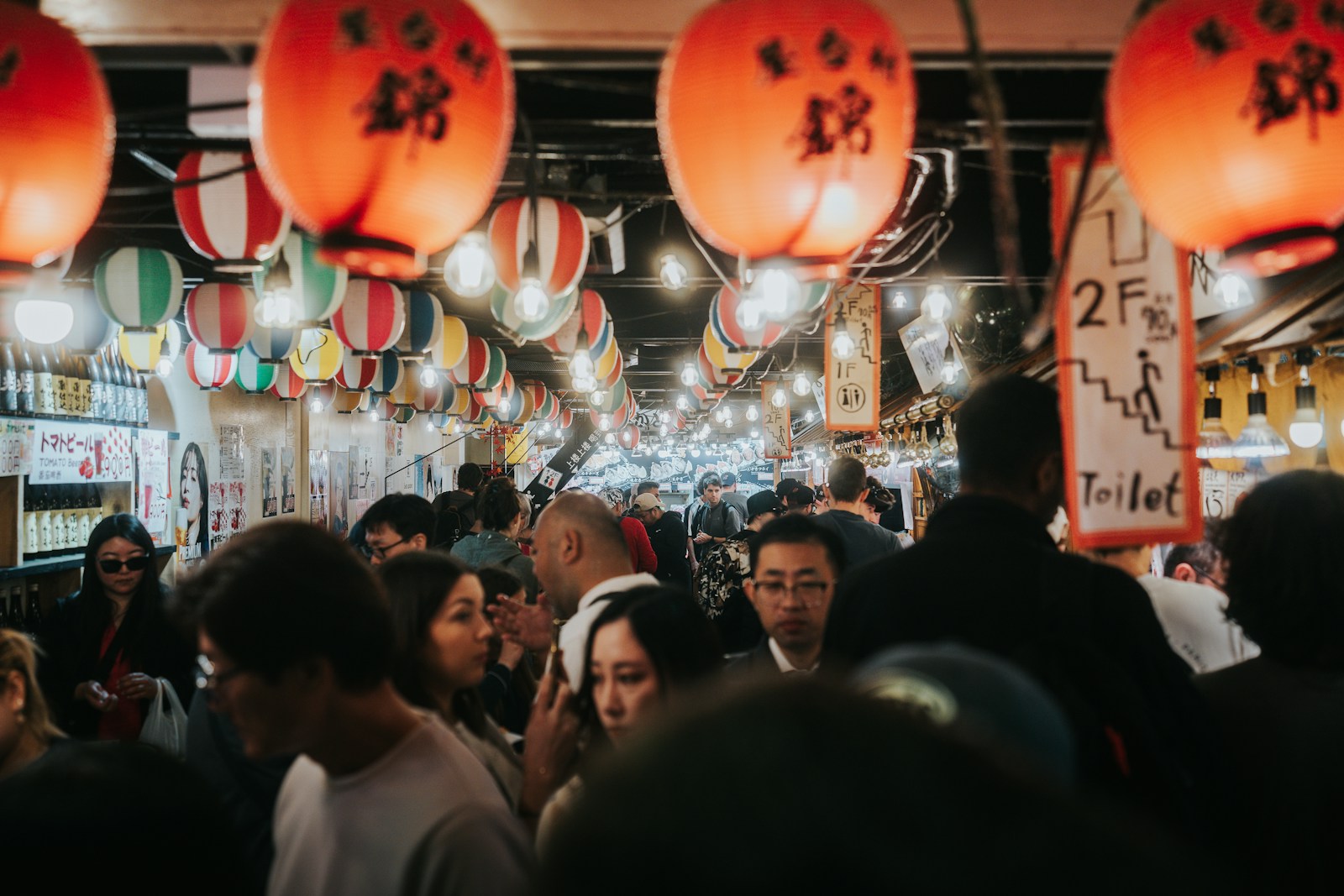Kyoto Street Food – A Great Option
Kyoto street food culture is a testament to its rich culinary heritage and offers a unique window into the heart of Japanese cuisine. Unlike the formal dining experiences often associated with Kyoto’s traditional kaiseki meals, street food presents an unpretentious and accessible way to savor the local flavors. From bustling markets to quaint riverside stalls, street food is integral to understanding the city’s gastronomic landscape and cultural identity.

Table of Contents
Street food in Kyoto is not just about eating; it’s about experiencing the essence of the community. These humble culinary delights serve as a bridge between the past and the present, preserving age-old recipes while adapting to contemporary tastes. My personal journey through Kyoto’s street food scene has been one of discovery and delight, offering numerous memorable encounters and flavors that have left a lasting impression.
The Essence of Kyoto’s Street Food
Historical Background
The historical roots of street food in Kyoto date back centuries, reflecting the city’s evolution and its people’s adaptability. Initially, street food vendors catered to the needs of travelers and locals seeking quick, affordable meals. Over time, these vendors became an essential part of Kyoto’s culinary tapestry, contributing to the diverse food culture we see today. The evolution of street food has mirrored societal changes, incorporating influences from different regions and adapting to modern culinary trends.
Street food in Kyoto has evolved significantly, with vendors continuously innovating while staying true to traditional flavors. This evolution has ensured that street food remains relevant and popular among locals and tourists alike. The balance between preserving traditional recipes and embracing new culinary techniques highlights the dynamic nature of Kyoto’s street food scene.
Cultural Significance
Street food plays a vital role in community bonding, bringing people together over shared culinary experiences. Whether at bustling markets or serene festivals, street food vendors create a sense of camaraderie and connection. These interactions are a crucial aspect of Kyoto’s social fabric, fostering a sense of belonging and cultural continuity.
The preservation of traditional recipes and flavors is another significant aspect of Kyoto’s street food. Many vendors have been passing down their culinary secrets for generations, ensuring that each bite carries the essence of the city’s rich culinary heritage. This dedication to authenticity makes street food a living museum of Kyoto’s gastronomic history, offering a taste of the past in every dish.
Nishiki Market: The Heart of Kyoto’s Street Food
Overview of Nishiki Market
Nishiki Market, often referred to as “Kyoto’s Kitchen,” is the epicenter of the city’s street food culture. Established centuries ago, this bustling market has evolved into a vibrant hub where locals and tourists alike can explore an array of culinary delights. The market’s historical significance is evident in its enduring popularity and the variety of traditional foods available.
Navigating Nishiki Market can be an adventure in itself. The market’s layout is a maze of narrow alleys and stalls, each offering unique and tempting treats. From fresh seafood to artisanal snacks, Nishiki Market is a treasure trove for food enthusiasts seeking to discover hidden gems and local specialties.
Must-Try Delicacies
One of the standout delicacies at Nishiki Market is yuba, or tofu skin. This traditional Kyoto specialty is celebrated for its delicate texture and rich, umami flavor. Exploring the unique flavors of yuba at different stalls reveals the versatility and culinary artistry involved in its preparation.
Another iconic treat is taiyaki, a fish-shaped cake filled with sweet red bean paste. The story behind this beloved snack is as charming as its taste. Originally inspired by Western pastries, taiyaki has become a quintessential part of Japanese street food culture, offering a delightful blend of tradition and innovation.
Exploring Gion’s Street Food Stalls
Discovering Gion
Gion, known for its historic geisha district, also boasts a vibrant street food scene that reflects its cultural backdrop. The area’s narrow streets and traditional architecture provide a picturesque setting for culinary exploration. Gion’s street food stalls offer a mix of historical charm and contemporary flavors, making it a must-visit for food lovers.
The cultural context of Gion adds depth to its street food offerings. Many of the recipes and techniques used by the vendors have been passed down through generations, creating a sense of continuity and authenticity. This historical richness enhances the overall experience of dining in Gion, making each bite a journey through time.
Culinary Highlights
Takoyaki, or octopus balls, are a highlight of Gion’s street food scene. These savory snacks, made with a batter filled with diced octopus, green onions, and pickled ginger, are cooked to perfection in specially designed molds. The art of making takoyaki is a skillful performance, with vendors deftly flipping the balls to achieve a crispy exterior and a tender, flavorful interior.
Yaki imo, or roasted sweet potatoes, offer a simpler yet equally delightful culinary experience. These sweet, smoky treats are especially popular during the cooler months, providing warmth and comfort. Enjoying yaki imo while strolling through Gion’s historic streets is a quintessential Kyoto experience, combining culinary pleasure with cultural immersion.
Arashiyama’s Riverside Delicacies
Introduction to Arashiyama
Arashiyama, with its scenic riverside setting, is another fantastic destination for street food enthusiasts. The area’s natural beauty, characterized by the iconic Togetsukyo Bridge and lush bamboo groves, provides a stunning backdrop for enjoying local delicacies. Arashiyama’s street food scene is unique, offering flavors that are deeply tied to the region’s traditions and landscapes.
The appeal of Arashiyama’s riverside setting enhances the overall dining experience. The serene environment allows for a leisurely exploration of the food stalls, each offering unique and delicious treats. Whether savoring snacks by the river or exploring the nearby temples, Arashiyama’s street food provides a perfect complement to its picturesque surroundings.
Must-Try Foods
Mitarashi dango, skewered rice balls coated in a sweet and savory soy sauce glaze, are a must-try in Arashiyama. These delightful treats are traditionally enjoyed during festivals but are available year-round at local stalls. The combination of the chewy texture and the rich glaze creates a satisfying and memorable snack.
Kibi dango, traditional millet dumplings, offer a taste of Japan’s historical culinary practices. These simple yet flavorful snacks are often enjoyed with a sprinkle of kinako (roasted soybean flour), adding a nutty richness to the experience. Kibi dango exemplifies the simplicity and elegance of traditional Japanese street food, making it a staple for any visitor to Arashiyama.
Seasonal Street Food Festivals
Overview of Festivals
Kyoto’s seasonal street food festivals provide a dynamic and festive atmosphere for exploring local cuisine. Hanami festivals, celebrating the cherry blossom season, are particularly noteworthy. During these events, street food vendors set up stalls under blooming cherry trees, offering a variety of seasonal treats that complement the beauty of the blossoms.
Summer festivals in Kyoto also feature a diverse array of street food. These events, often held in temple grounds or public parks, bring the community together to enjoy traditional games, performances, and, of course, culinary delights. The lively ambiance and the wide range of food options make these festivals a highlight of Kyoto’s street food calendar.
Festival Favorites
Kakigori, or shaved ice, is a popular treat during Kyoto’s summer festivals. This refreshing dessert, topped with flavored syrups and sometimes condensed milk, provides a cooling respite from the summer heat. The variety of flavors, from classic strawberry to unique matcha, ensures there’s something for everyone to enjoy.
Taiyaki variations also make a significant appearance at festivals. While the classic red bean filling is a staple, seasonal twists such as custard, chocolate, or even savory fillings add excitement and variety. These creative adaptations showcase the vendors’ ingenuity and the versatility of this beloved street food.
Street Food Etiquette and Tips
Navigating Street Food Culture
Understanding street food etiquette is essential for making the most of your culinary adventure in Kyoto. Basic dos and don’ts include queuing properly, disposing of trash responsibly, and being mindful of local customs. Respecting these practices ensures a pleasant experience for everyone and helps maintain the cleanliness and orderliness of street food areas.
Practical tips for navigating Kyoto’s street food scene include arriving early to avoid long lines and bringing cash, as many vendors do not accept credit cards. Additionally, being adventurous and open to trying new foods can lead to delightful discoveries and a more enriching experience.
Health and Safety
Ensuring a safe and enjoyable street food experience involves being mindful of hygiene standards. Observing the cleanliness of food stalls and the practices of vendors can provide clues to the safety of the food. Choosing busy stalls with high turnover can also indicate fresh and safe food.
Dietary considerations are important, especially for those with specific dietary needs or allergies. Communicating dietary restrictions to vendors, when possible, can help in selecting suitable options. Many vendors are accommodating and will try to provide alternatives when informed of dietary preferences.
Personal Reflections on Kyoto’s Street Food
Personal Experiences
My personal experiences with Kyoto’s street food have been nothing short of extraordinary. Memorable moments include savoring freshly made taiyaki on a chilly evening in Gion and discovering the delicate flavors of yuba at Nishiki Market. Each encounter has deepened my appreciation for Kyoto’s culinary diversity and the passion of its street food vendors.
The lessons learned from exploring Kyoto’s street food scene highlight the importance of curiosity and openness. Trying new foods and engaging with local vendors have enriched my understanding of Kyoto’s culture and culinary heritage. These experiences have underscored the value of street food as a means of cultural exchange and connection.
Inspiring Exploration
Encouraging readers to embark on their own street food adventures in Kyoto, I recommend being adventurous and embracing the unexpected. Each street food stall offers a unique story and flavor, contributing to a rich and diverse culinary tapestry. Exploring beyond the well-trodden paths can lead to delightful discoveries and unforgettable experiences.
Final reflections emphasize the importance of street food in understanding Kyoto’s culture. These humble culinary offerings provide a direct link to the city’s traditions and community life, making them an essential part of any visit to Kyoto. Sharing these experiences with others can further enhance the appreciation and enjoyment of Kyoto’s street food.
Kyoto Street Food – Conclusion
Kyoto street food scene offers a unique and immersive culinary adventure, reflecting the city’s rich cultural heritage and vibrant community life. From the historical roots of Nishiki Market to the seasonal delights of local festivals, street food provides a flavorful journey through Kyoto’s culinary landscape. I encourage visitors to explore and savor the diverse flavors of Kyoto’s street food, embracing the adventure and connection it offers. Sharing your own discoveries and experiences can help keep this cherished tradition alive for future generations.

